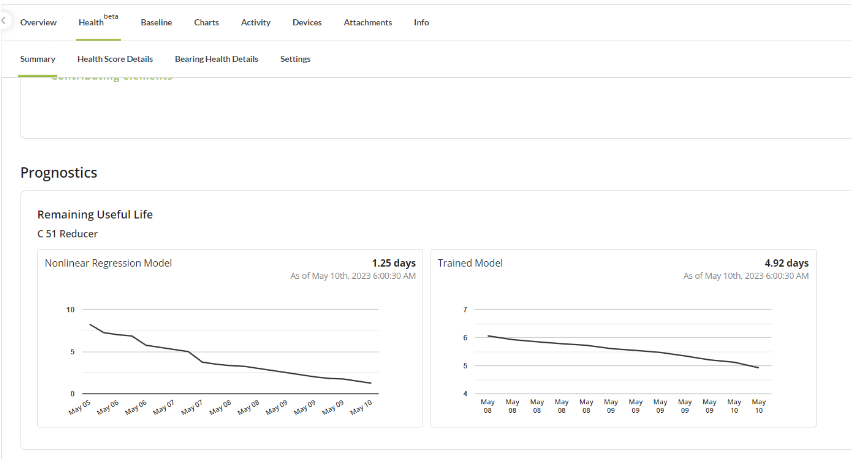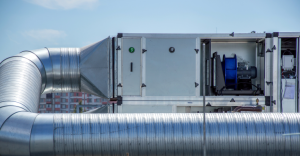SEPTEMBER 19, 2024
Optimizing Industrial Reliability with Centralized Monitoring & Diagnostic Centers (MDCs)
DAN BRADLEY, SENIOR EXECUTIVE @ PETASENSE

Introduction
Condition monitoring and reliability programs are typically structured around technology, processes, and personnel at the site level. In contrast, Centralized Monitoring & Diagnostics Centers (MDCs) are organized around a central group, or “Hub,” with varying levels of support at individual sites.
Site-based programs often require significantly more resources, making it challenging to implement best practices and potentially leading to additional costs due to varying technology and resource decisions. A Centralized Monitoring & Diagnostics Center MDC, however, enables a more consistent application of resources and technology, while also facilitating the use of best practices across locations.
In this article, we will outline the benefits and challenges associated with establishing and operating a centralized reliability program, as well as offer recommendations on best practices in use today.
The Inception of Centralized MDCs
While centralized monitoring is currently experiencing global growth driven by advancements in technology, the concept itself has been around for quite some time. Some of the earliest implementations date back to the early 1990s within the Power Generation industry. Fleet management of similar assets, along with the development of online instrumented systems, created the opportunity to establish centralized teams dedicated to monitoring, analysis, and providing recommendations (Southern Company, 2012). Another early example can be found in Wind Energy (Reliable Plant, 2010). As wind farms began operations in the 1990s, they encountered significant design maturity challenges. These, coupled with their remote and often unstaffed nature, made centralized monitoring an ideal solution for wind farms.
Although the concept is not new, the underlying drivers and enabling technologies continue to evolve. In the following sections, we will examine these drivers, explore implementation considerations, and discuss the challenges and future developments in this space.
Consider the Benefits
The benefits of adopting a Centralized Monitoring & Diagnostic Center (MDC) can vary based on your organization’s maturity level within Industry 4.0. Some advantages may be immediately clear, while others may become more evident as you progress. One of the greatest strengths of this approach is the consistency it brings to monitoring practices across multiple locations. By reviewing these key benefits, you can better assess whether a centralized MDC is the right fit for your company.
1. Optimized Resource Utilization:
One of the foremost challenges for site-based condition monitoring programs is maintaining the right level of expertise across every location. Factors such as retirements (Pew Research, 2021), staff turnover, varying experience levels, and remote site locations can complicate this. A centralized MDC alleviates this issue by providing a pool of high-level expertise that can be deployed across multiple sites. This centralized resource structure also offers flexibility, ensuring backup for key personnel during illness, vacations, or retirements.
2. Enhanced Program Quality:
While a remote structure may present certain challenges, the benefits generally outweigh the disadvantages. A centralized approach ensures that trained, experienced personnel manage the monitoring at all sites, leading to a significant improvement in overall program quality. Additionally, centralization helps organizations create, adopt, and maintain best practices more consistently across their operations.
3. Standardization of Best Practices:
Centralized MDCs provide the unique advantage of applying consistent best practices across all locations. This includes making decisions on which assets to monitor, how to monitor them, and the types of recommendations to provide. By standardizing these procedures across similar assets and production processes, companies can better detect failures, perform root cause analysis, and implement proactive measures. (Refer to Figure 1 for an example of an automatically generated fault pareto, used in proactive reliability improvement.)

4. Data Collection and Analysis for OEMs:
For Original Equipment Manufacturers (OEMs), centralized monitoring offers an exceptional opportunity to collect, aggregate, and analyze data on the performance of their products. This valuable insight, which would otherwise be difficult to obtain, can help improve product design, optimize warranty programs, and provide additional value-added services to customers.
5. Consistent Data for Mining and Analysis:
Another benefit closely related to program quality is the ability to maintain a consistent database for data mining purposes. Many IIoT implementations aim to leverage data to improve production, safety, and reliability. When each site creates its own program setup, inconsistencies arise, making it difficult to properly mine and analyze the data. A centralized approach eliminates this issue by standardizing the data structure across all sites.
6. Enable Monitoring of Remote or Hard-to-Reach Assets:
Centralized MDCs are particularly beneficial for assets located in remote or lightly staffed locations. Industries such as wind energy (wind farms), pipelines, power generation (peaking plants), pharmaceuticals, water treatment, and building facilities in particular all benefit from remote monitoring and diagnostic capabilities.
7. Improved Safety:
Although safety improvements are not solely the result of centralization, they are often closely linked. Centralized programs typically rely on remotely collected data, reducing the need for personnel to be physically near the asset during production. In industries where personnel exposure to operating assets is restricted, this approach can improve safety.
8. Cost and Efficiency Gains:
Finally, a properly implemented centralized MDC is generally more cost-effective than deploying resources at every site. By having experienced practitioners dedicated to monitoring systems full-time, they develop expertise in quickly reviewing, analyzing, and providing recommendations. With advances in cloud-based technologies and the use of sophisticated algorithms, it has become increasingly efficient to screen incoming data and make informed decisions.
In conclusion, the consistency and efficiency afforded by a Centralized MDC make it a highly effective model for companies looking to improve their condition monitoring programs. By optimizing resources, enhancing program quality, and offering greater insights into asset performance, centralized monitoring delivers significant operational and cost benefits.
Implementing a Centralized MDC
If the benefits of a centralized MDC seem like a good fit for your organization, what steps should you take to implement it effectively? While specific requirements will vary based on industry and corporate maintenance practices, the following recommendations are broadly applicable.
1. Develop a clear understanding of the types of assets to be monitored. This may involve conducting a criticality analysis, but should also take into account the anticipated failure modes and best practices for monitoring. Consider sensor selection, placement, and the key measurement parameters. A side benefit of standardizing this process is that it streamlines procurement and can create pricing opportunities with vendors.
2. Establish a corporate standard—agreed upon by all sites—detailing the processes that will be followed. This should define responsibilities for actions ranging from maintenance recommendations to the upkeep of sensors and wireless networking hardware. Additionally, a “common language” should be adopted for categorizing severity levels and the actions required. For example, what distinguishes a “Critical Alarm” from a “Warning Alarm,” and what are the next steps for each?
3. Select the right technology. While portable data collectors can be part of the solution, they typically represent a smaller portion of a centralized program. The focus here often revolves around online, wireless systems, which are becoming more prevalent across all industries.
a. Centralized Database Creation: While a client-server architecture can be used to manage data, a native cloud-based implementation is recommended. The cloud offers several advantages, including enhanced reliability, frequent updates, better performance, lower maintenance costs, and seamless integration with third-party systems such as process historians, CMMS, and data lakes.
b. Sensor Selection: Selecting the right sensors is crucial, whether for monitoring vibration, pressure, temperature, or current. It’s important to ensure that the sensors provide the necessary reliability, have the ability to measure key parameters, and offer the correct frequency response and size. For instance, when monitoring rotating equipment with variable speed drives (VFDs) or other variable operating conditions, it is essential to collect running speed data to accurately correlate with condition data such as vibration and temperature. Without correct and accurate raw data, even the most advanced post-processing techniques will fail to generate actionable insights.
c. Communication Technology: The communication technology that connects sensors to the cloud must be reliable and acceptable to corporate IT standards. It should not only be robust but also capable of transmitting raw time-domain (vector) data to ensure comprehensive data capture, which is critical for accurate machine health analysis.
d. Support for Supervised Learning and System Optimization: The system should allow for supervised learning and ongoing optimization by the centralized team. Since this team will gain significant domain expertise over time, they must have the ability to modify and refine existing rules and algorithms as needed to ensure continuous improvement.
Challenges and Future Outlook
A key challenge for centralized Monitoring and Diagnostic Centers (MDCs) is gaining site acceptance and establishing a clear understanding of roles and responsibilities. Successful implementation often requires significant effort to secure buy-in from site personnel and to facilitate feedback on the process. Resistance to relinquishing “local control” can be a notable barrier that must be carefully managed.
Remote monitoring and diagnostics also comes with its own set of challenges. In contrast, manual inspections with portable instrumentation can be limited by the need for physical presence and have the potential for missed equipment, while at the same time providing valuable insights and allowing for additional ad hoc tests.
Despite these challenges, the advantages of remote monitoring are substantial. The ability to capture data continuously, regardless of location or operational status, ensures comprehensive coverage that manual inspections may miss, such as equipment downtime or units that are temporarily offline.
Battery life is another consideration for wireless systems. However, advancements in low-energy circuitry, battery technology, and energy harvesting are significantly addressing this issue and are expected to continue improving in the near future.
Looking ahead, ongoing innovations in integrated systems—covering processes, electrical systems, and oil condition monitoring—along with enhanced algorithms, are set to further enhance the efficiency and effectiveness of remote wireless systems. Emerging analytics tools such as Remaining Useful Life (RUL) algorithms, though still in their early stages, show promising potential to support and refine analysts’ decision-making capabilities (See Figure 2).

Final Thoughts
The rapid advancement of wireless systems and Cloud computing has revolutionized centralized Maintenance and Diagnostic Centers (MDCs), delivering unparalleled quality, efficiency, and cost-effectiveness. These technologies democratize expert analysis, whether provided internally or by third-party specialists.
Centralized MDCs benefit from optimized resource utilization, superior data access, reduced program costs, and the capability to monitor even the most remote assets. To fully leverage these advantages, it’s essential to select the right technology and implement a robust strategy. Embracing these innovations not only enhances reliability and performance but also positions organizations for sustained success and resilience.
References
1. “Southern Company Generation Monitoring & Diagnostic Center”. EPRI ID#1025512. May 10, 2012.
2. “Guohua wind turbines choose SKF for remote monitoring”. Reliableplant.com. https://www.reliableplant.com/Read/28092/Wind-turbines-SKF-monitoring 2010.
3. “Amid the Pandemic of Older US Adults Retiring”. Pew Research. https://www.pewresearch.org/short-reads/2021/11/04/amid-the-pandemic-a-rising-share-of-older-u-s-adults-are-now-retired/ Nov 4, 2021.
About the Author
Dan Bradley is a Mechanical Engineer with 40+ years of experience in the Reliability and Condition Monitoring industry. This includes consulting, design and implementation of programs around the world in a variety of industries. He has held previous positions that include CEO of Petasense, Inc, Global Director of SKF AB Reliability Systems and he started his career with IRD Mechanalysis, Inc.


 Thanks for subscribing - stay tuned for our next newsletter
Thanks for subscribing - stay tuned for our next newsletter